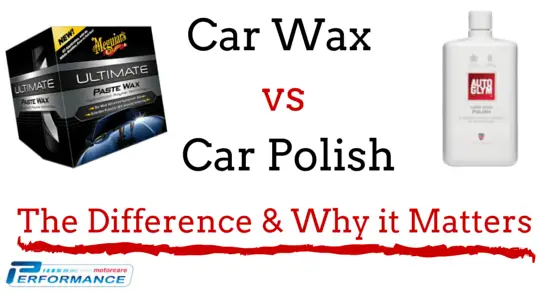
Do you know the big (and very important) difference between car wax and polish? Would you like to know when and why to use them and in what order?
If you’re not 100% sure of the difference or want to know more about what makes them different and why it is vital in getting the best shine on your car or truck, then keep with me…
The two most regularly asked questions I receive are; “What is the best car polish to use to protect my car” and “What is the best car wax to use to polish my car”.
Unfortunately, these two questions demonstrate the huge misconception in the marketplace as to what can be achieved by the sole use of car wax or sole use of a polish.
In this article, which forms one of my guides to Detailing and Proper Car Care series, I aim to dispel these car polish vs wax misconceptions and help explain why, unless you have an immaculately and regularly detailed car, you should not initially use one without the other and what benefits you will get from each.
What is the difference between car wax and polish?
What Is Car Wax?
Firstly let’s start with the question What is a Wax? A wax in its natural form comes in many guises from vegetable waxes i.e carnauba to animal waxes i.e. beeswax. It is the natural properties of some of these waxes that make them ideal for use in car waxes.
The most popular for use in the automotive industry is carnauba wax. What makes this type of wax ideal is that it is:
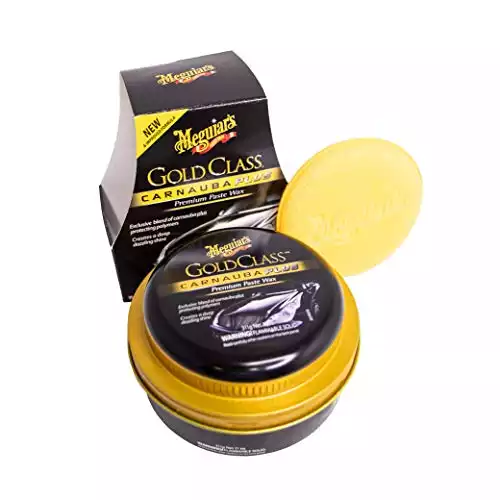
-
- virtually insoluble in water, so won’t immediately disappear after each wash or rain shower
- a melting point of 82-86 °C so will withstand the high daylight summer temperatures without melting off your car
- although one of the hardest waxes to be found in its natural form it produces a durable and very glossy finish when combined with other waxes/ingredients used to produce a softer product that can be more easily applied to paintwork.
Most car waxes will therefore be a combination of the natural wax, solvents, silicone fluids, other waxes and colorants. Some will also contain abrasives, depending on the product being developed but for the purposes of this article we are looking to compare the “pure” wax vs polish.
In giving your paintwork its shine, your wax will effectively be “smoothing” out the surface of the paint by “filling” in many of the imperfections in the paintwork.
Unfortunately, if your paintwork is suffering from oxidation, dullness or swirls there is only so much “filling” that the wax can achieve and all you are effectively doing is covering up and hiding the true nature of why your car is not looking as good as it should.
One other category of “wax” we have not yet considered is the “synthetic wax” or “sealant”. Again these have various other added ingredients that change how the product adheres to your paintwork giving a longer-lasting and more durable finish.
The difference between waxes and sealants is again a subject in its own right and I will explore this further in a future article.
However, you won’t find a car wax made of just 100% pure carnauba.
In the section below we look at What is a Car Polish? At the end of this article, there are also links to a couple of related articles I have written about waxes and polishes specifically suited to different paints.
What is Car Polish?
In contrast to a wax, a car polish is a product that uses an abrasive action to remove very fine layers of the topcoat protection to flatten out the surface to ensure an equal reflection of the light and thus a highly polished look.
Such products come in varying degrees of abrasiveness from medium to ultra-fine.
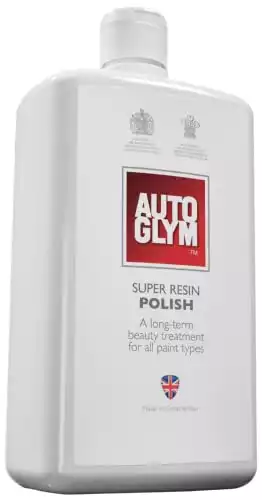 The quality modern polish will be made of what is known as diminishing abrasives which break down into further smaller particles as they are worked on the paint thus getting finer and finer the more they are “polished” into the paint.
The quality modern polish will be made of what is known as diminishing abrasives which break down into further smaller particles as they are worked on the paint thus getting finer and finer the more they are “polished” into the paint.
This avoids the need to go through varying steps of abrasiveness in different bottles to achieve a highly polished look. Many polishes also contain gloss enhancing oils which further help to provide a deep look shine to the paintwork.
Why does it matter?
What however is missing by just applying your polish is any protection to the polished paintwork, which is where your wax comes in to protect all the hard work you have just put in polishing and achieving that deep gloss shine.
Which, using your wax or sealant, you will now protect for a few to several months (depending on how often your car is used, how it is stored, the wax you have used, and the environment).
It is worth mentioning at this stage another product group called Glazes. A true glaze is a product that does not contain any abrasives but a mix of gloss enhancing oils and Koalin which effectively fills in any remaining imperfections in the paintwork to ensure a bright evenly reflective surface.
It is good practice, especially on some of the more softer modern paint finishes not to us a pure polish too often but to use a glaze more frequently than you polish to maintain the gloss and look of your paintwork.
This will ensure you are not continually taking off micro layers of the clear coat each time your detail your car and thus ensuring the longer-term effectiveness of your paint protection.
As with polishing however, it is vitally important after using a glaze that you immediately seal it in with your wax or sealant otherwise the fine fillers and oils that provide the smooth reflective surface will be washed away in the first rain or next car wash.
I hope this has helped to explain the difference between polishes and waxes, how they work and what difference they make to the look and protection of your paintwork.
Related Articles:
Top 10 Car Waxes & Polishes For Dark Cars
Find out more here…
Top 8 Car Polish and Wax for White, Silver and Light Coloured Cars
Find out more here…
How To Polish A Car By Hand – Step By Step Guide
Read more…
How Often Do I Have To Polish And Wax My New Car?
Learn more…
Your Turn:
When and how did you discover the difference between Car Wax and Car Polish – do you believe many manufacturers still make it confusing? Please share your experiences in the comments box below.

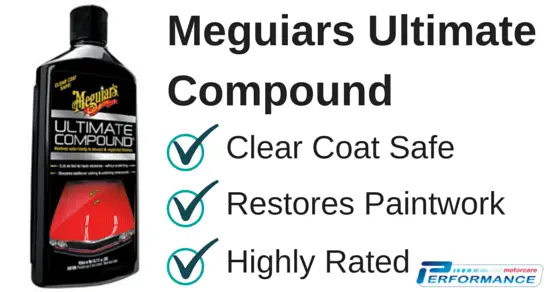
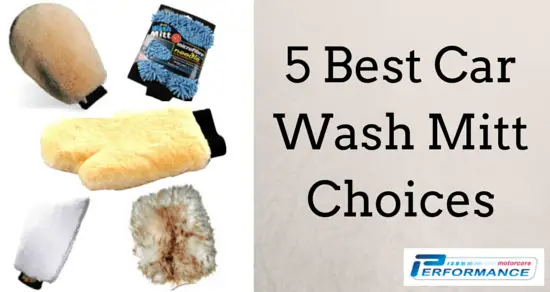
16 Comments
Man With Van
good to learn the difference in wax and polish. thanks for sharing it.
Elaine Sanderson
I think this is one of the best articles I have read about the difference between car wax and car polish. There is a lot of rubbish out there and this article really gets to the bottom of what the REAL difference is – thankyou!
Sean W
Brilliant. After years of making sure my cars have always looked good, I have never used Wax. These products are expensive enough and now I’ve read that the wax will protect the post polishing I shall now start to do this. Occassional polishing and more frequent waxing! Thanks for the article. Just need the better weather now!
JonnyS
according to my reading, don’t polish very often at all, maybe only every couple of years or only when paintwork is dull ie as an exception as it is removing the surface. Use a glaze more frequently to ‘cover’ the defects and then wax to protect.
Rob Mobberley
Jonny – you got it – that’s a pretty good summary in a nutshell.
Ian C
The confusion isn’t helped when you can buy in certain supermarkets bottles of polish clearly marked as wax.
I bought some to try and yes, it is clearly a liquid polish labelled as wax. Not bad polish for a cheap price, shame its not sold as such.
Joao Gouveia
Excellent explanation of the subject and very handy as well, I am amazed about the percentage of people you elucidated!….cheers
褚襄烈婚姻與家庭教育
thanks, very good article to clarify the differences between each other.
Michael Crisp
Finding glaze is the problem. Tell me a product that states it is a glaze.
Rob Mobberley
Mike there are several products are sold as pure glazes. These include Poorboys Black Hole http://www.performancemotorcare.com/poorboys-black-hole-show-glaze-dark-cars/
Poorboys White Diamond http://www.performancemotorcare.com/poorboys-white-diamond-show-car-glaze-light-coloured-cars/
Meguiars Showcar Glaze
Hope this helps.
Keep em gleaming.
Rob
Michael Crisp
I am looking for a way to clean the engine compartment. We have the outside looking like new ,as always ,but when I put the hood up,,,,, I need input here.
Rob Mobberley
Mike in all honesty this isn’t an area we have really covered to date in any of our posts. It’s a great point though and one I will be sure to add to the list to write up a guide about. I think may people are pretty frightened of touching modern engine bays with all the electronics in them.
Shivansh Gupta
Does the liquid wax is similar to polish or is it like paste wax? I am confused between liquid wax and paste wax and now I am wondering whether the liquid wax is same as polish.Please clarify.thanks
Rob Mobberley
Shivansh essentially a liquid wax is very similar to the paste version but with added ingredients to soften it to a liquid form – the adding of these chemicals does not give it any polishing properties – it just makes it a little easier to use. Rob
Ray Garston
How do the different options on washing cars e.g bucket, pressure wash or overhead car wash influence the longevity of a good polish / wax finish?
Rob Mobberley
Hi Ray thanks for your question. The bucket method and standard pressure washers should not remove the wax from your car – assuming you are not mixing any harsh chemicals with the water. With some of the touchless car washes you have to be a little careful as some of those will use a mild acid to help loosen the dirt, then another chemical to neutralise the acid and then a high power jet of water so it is possible this could strip some of your wax protection. I hope this helps. Rob